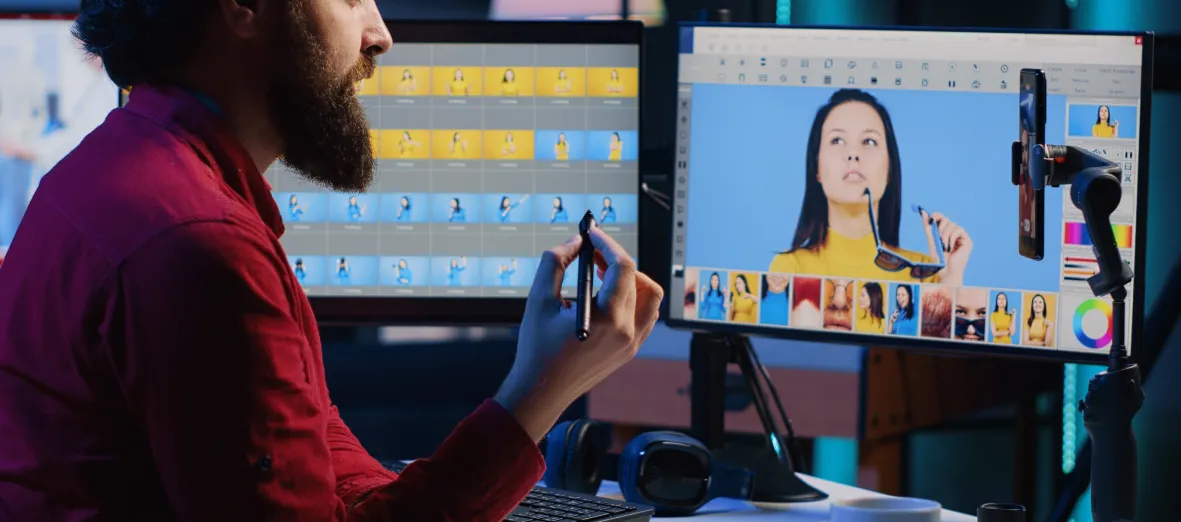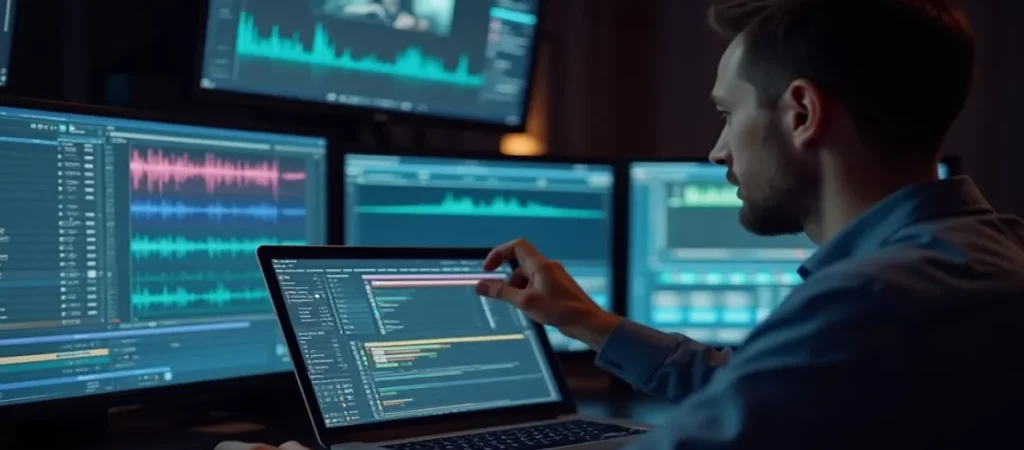In the fast-paced world of media production, where time is of the essence and creativity knows no bounds, technological advancements have always played a pivotal role in transforming the way content is created and delivered. One such groundbreaking innovation that has taken the industry by storm is artificial intelligence (AI). With its remarkable capabilities and endless possibilities, AI has revolutionized various stages of the production process, including the crucial realm of postproduction.
AI has propelled postproduction workflows into a new era of efficiency, productivity, and creative freedom, from automating labor-intensive processes to enhancing the quality of visuals. In this blog we will explore the significant advancements made possible by AI technologies, from automated editing to speech-to-text transcription and from visual effects to content recommendation.
Localization
Localization, the process of adapting products or services to meet the language, cultural, and regulatory needs of a specific region or country, has been significantly impacted by AI. Some ways that AI has influenced localization are as follows:
- Machine translation: Implementing AI-powered machine translation technology has made it possible to translate content across various languages quickly and accurately, reducing localization costs and time.
- Natural language processing (NLP): NLP is an AI technology that facilitates machine comprehension and interpretation of human language. It plays a role in various localization tasks, such as text and sentiment analysis and speech recognition.
- Data analysis: AI can assist in studying data from multiple sources, including social media and customer feedback, to identify patterns and trends in language usage and preferences. This information can help inform localization strategies and improve localized content quality.
- Quality assurance: AI algorithms can play a crucial role in quality assurance by automatically detecting errors, inconsistencies, and potential linguistic issues in localized content. AI tools can check for grammar, punctuation, and style errors, ensuring linguistic accuracy and adherence to localization guidelines. This helps reduce the time and effort required for manual quality checks.
- Speech recognition and voiceover: AI-powered speech recognition and voice synthesis technologies have transformed the voiceover and dubbing process. These tools can automatically transcribe spoken dialogue, making it easier to create accurate subtitles or to synchronize lip movements with translated dialogue in different languages. AI-driven voice synthesis can also generate high-quality localized voiceovers, reducing the need for human voice actors in some instances.
Automatic transcripts, closed captions, subtitles, and translation
AI has significantly impacted automatic transcripts, closed captions, subtitles, and translation services. Here are some ways in which AI has transformed these areas:
- Automatic transcripts:AI-powered speech recognition systems have greatly improved the accuracy and speed of generating automatic transcripts. These systems use advanced machine learning algorithms to convert spoken language into written text. The accuracy has significantly increased over the years, making it easier to create transcriptions for various applications such as lectures, interviews, meetings, and more.
- Closed captions: AI has played a crucial role in enhancing closed captioning services. Automatic speech recognition technology combined with natural language processing algorithms makes it possible to convert spoken content into text, which is then displayed as captions. This has made media content more accessible to people with hearing impairments and has also become valuable for non-native speakers, who may find it easier to comprehend the text alongside the audio.
- Subtitles: AI has improved the creation of subtitles for movies, TV shows, and other video content. Previously, subtitling was a time-consuming, manual effort. With AI, automatic subtitle generation has become faster and more accurate. Machine learning models can analyze the audio and transcribe the spoken words into the desired language, synchronizing them with the video. This has expanded accessibility and made the content more easily consumable by people who prefer or require subtitles.
- Translation: AI has revolutionized the translation industry. Neural machine translation models powered by AI techniques have significantly improved the accuracy of automated translations. These models learn from vast amounts of multilingual data to understand language patterns, context, and idiomatic expressions. AI translation services enable quick and accessible translation across multiple languages, facilitating communication and breaking down language barriers.
Media monitoring, compliance, and logging
AI has significantly impacted media monitoring, compliance, and logging in recent years. Here are some of the ways AI is affecting these areas:
- Media monitoring: AI has enabled media producers to monitor vast amounts of media content quickly and efficiently. Machine learning algorithms can be trained to identify specific keywords, topics, or sentiments in media content, making monitoring specific topics and trends easier. This technology can also be used to track social media activity and measure audience engagement in real time.
- Compliance: AI tools can analyze audio and video content to detect potentially problematic material, such as copyrighted material or offensive language. Another way AI can impact compliance in media production is through automated transcription and captioning. Automated transcription and captioning tools can accurately transcribe audio and video content, making it easier to comply with accessibility regulations and improve the accuracy of closed captions for the d/Deaf and hard of hearing.
- Logging: AI algorithms can automatically tag video and audio files with relevant metadata such as keywords, speaker identification, and scene detection. This can significantly speed up the logging process and make it more accurate, allowing media professionals to quickly find the exact footage they need.
AI is transforming media production and is set to become an essential part of the entertainment industry. From content creation to postproduction, distribution, and marketing, AI-powered tools and algorithms are helping broadcasters and content creators to create high-quality content faster and more efficiently. While there are challenges to overcome, the benefits of AI in media production are clear, and it is an exciting time for the entertainment industry as technology advances.




